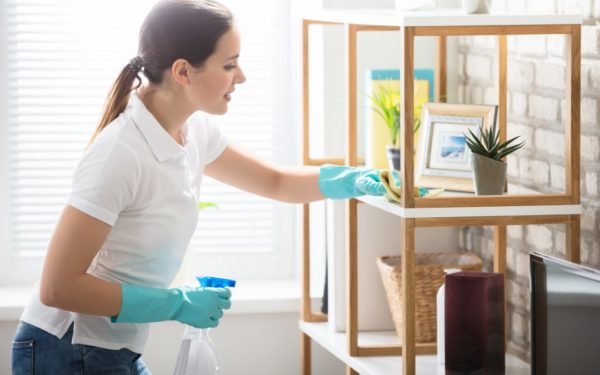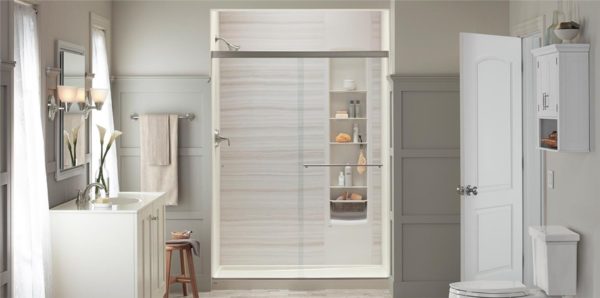
Having good indoor air quality is an important part of living in a healthy home. You can improve your indoor air quality by reducing the sources of allergens and irritants in your home.
The Truth About Indoor Air Quality
Particles or gasses that are not normally part of the air affect air quality. This is called air pollution. Air pollution can also happen indoors. Why is this?
You bring outdoor air inside any time you open a door or window. You can also bring in pollen and smoke. Leaks around doors and windows can let in polluted outdoor air.
Indoor air can have allergens like dust, pet dander and mold. Humidity can lead to higher dust mite levels. Particles are released into the air by furnaces, wood-burning fires and candles. Cooking sends oil and fat particulates into the air. Newly installed floors and furniture can release chemicals.

Clean outdoor air needs to replace indoor air often or else the indoor air becomes more polluted. Otherwise allergens, smells and pollutants stay in your home and recirculate. Because newer, more energy-efficient homes don’t have the same gaps and cracks as older homes, there’s less air circulation.
Here are ways you can reduce the sources of allergens and irritants throughout your home:
- Establish regular cleaning routines.
- Measure your home’s humidity levels and keep below 50%. If you live in a wet climate, you may need a dehumidifier.
- Keep windows closed during peak pollen times or during times of high outdoor pollution.
- Remove strong scents like candles and harsh cleaners. Replace traditional scented candles and potpourri with battery-powered ones.
- Have Total Mechanical Systems install an Indoor Air Quality system in your home.
Bedroom – Allergy control starts in the bedroom. You spend approximately 1/3 of your time in your bedroom.
Allergens in your bedroom can impact your sleep if they make asthma or atopic dermatitis (eczema) worse. Start by protecting and cleaning your bed.
- Replace pillows every two years. Look for CERTIFIED pillows or zippered allergen protectors. For a pillow or pillow cover to be CERTIFIED, we test to make sure it:
- Has an outer fabric that blocks allergens like dust mites from passing through
- Is made with a breathable fabric for your comfort
- Can be easily cleaned to remove allergens
- Can withstand the wear and tear of regular washing
- Vacuum your mattress and box springs before covering them with CERTIFIED allergen-barrier covers. Replace your mattress every 10 years.
- Wash bedding weekly in hot, soapy water (130 F). Dry them on high.
- Leave your bed unmade to let it cool and air out. Warmth and moisture from your body encourage dust mite growth.
- Don’t let pets in the bedroom and never on the bed.

Bathroom – Mold thrives in wet or humid places like bathrooms.
- Run a fan in your bathroom at least 15 to 20 minutes after showering.
- Allow towels and washcloths to dry thoroughly after bathing.
- Fix any leaks in or near sinks, toilets, tubs and showers.
- Clean and remove mold – check windows, showers, tubs, sinks, toilets and inside cabinets.
- Check shower curtains for signs of mold and mildew and replace, if necessary.
- Dust or rinse clean the exhaust fan covers.
Living Room – The living room is the center of activity in your home. That means it’s also a central location for many things that affect indoor air quality.
- Reduce fabric in your living room that dust mites and other allergens can cling to and hide under.
- Choose leather or vinyl furniture over fabric pieces.
- Throw out the throw pillows. They are usually hard to clean, so they can easily collect dust mites and dander.
- Instead of curtains, hang blinds you can dust often. If you choose fabric curtains, choose ones you can wash in 130 F hot water regularly.
- Wash throw blankets weekly in 130 F hot water.
- Remove clutter.
- Dust ceiling fans and electronics.
Kitchen – The kitchen is a common place to find allergens like mold and pests like cockroaches. These allergens can affect you all year long.
- Fix leaks from your sink, dishwasher and refrigerator water line.
- Remove mold – check sinks, inside cabinets, produce bins, trash cans and refrigerator seals.
- Clean your in-sink garbage disposal with baking soda and white vinegar.
- When buying produce, wash it before you put it away. Throw out produce before it grows mold, and clean the bins of your refrigerator often.
- Don’t leave sources of water and food out at night for cockroaches. Remember to put away your pet’s dishes too.
- Use lids on trash cans.
- Store food in your pantry in airtight containers.
- Clean up spills right away.
- Don’t let dirty dishes pile up on the counter or in your sink.
- Use roach baits instead of sprays to control cockroaches.
- Wipe down the tops of your cabinets and vent hood often with warm, soapy water. These areas are often overlooked.
Cleaning – It’s important to establish a regular cleaning routine to remove allergens. It’s equally important that cleaning does not make your indoor air quality worse.
- Wear a mask when cleaning or have someone else do the cleaning while you leave the area.
- Use unscented or homemade cleaners or use a CERTIFIED household cleaner.
- Avoid high VOC products. Look for products labeled low VOCs and only use them in well-ventilated areas.
- Avoid aerosol cleaning products.
- Use a CERTIFIED vacuum weekly. Vacuum/mop under all furniture and vacuum furniture.
- Wash curtains and rugs in water 130 F degrees or hotter.
- Dust behind furniture, like dressers and nightstands.
- Dust ceiling fans and light fixtures.
- Dust high closet shelves.
Houseplants – If you have houseplants or potted herbs, make sure to prevent mold.
- Plant them in sterile soil.
- Only water them when the soil is dry.
- Give them more light.
- Use a fan to circulate air around the plant.
- Trim dead leaves often.
Many products promise to help control allergens. To help you make informed decisions, AAFA has CERTIFIED more than 200 products. When you are shopping for products for your home, look for the CERTIFIED asthma & allergy friendly® mark. It indicates the product has passed testing standards.
Visit aafa.org/certified to search for CERTIFIED products. There you can also learn more about the asthma & allergy friendly® Certification Program.
Ensure your home’s indoor air quality is top notch, call Total Mechanical Systems today to find the right IAQ system for you!





